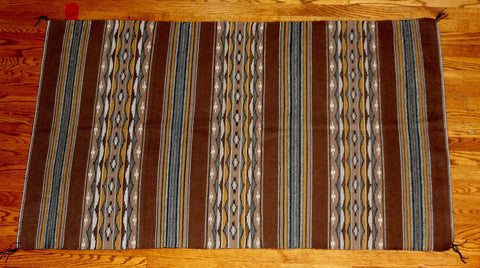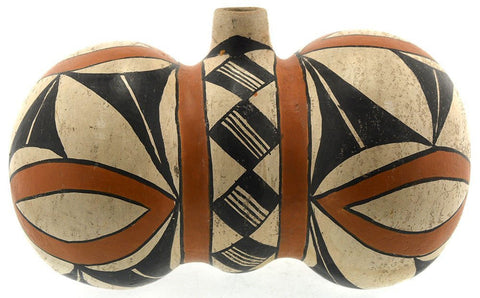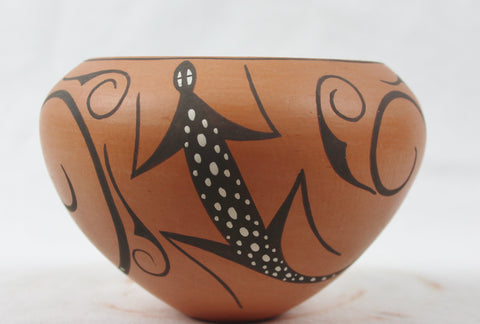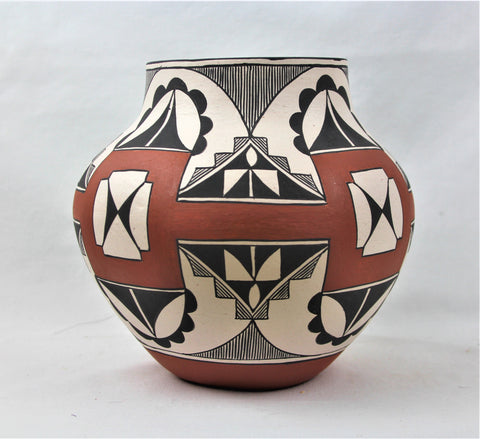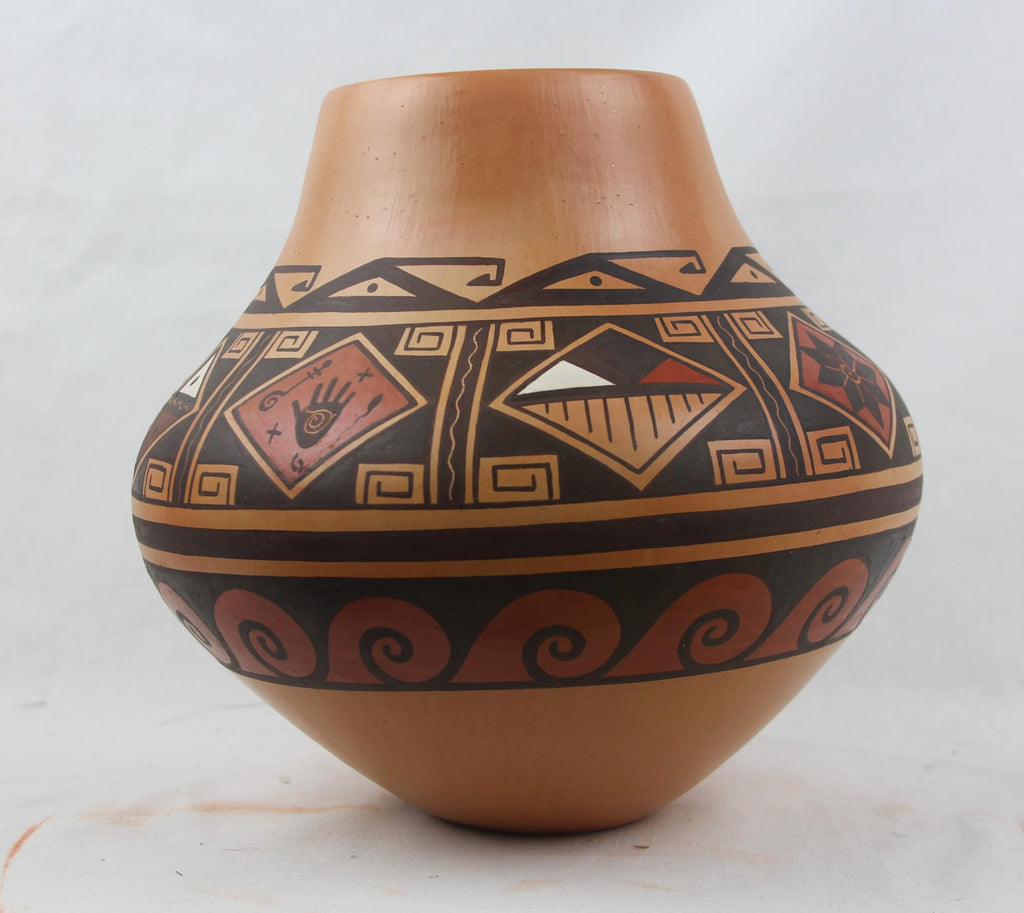
Native American Traditional Hopi Polychrome Pottery Jar, by Agnes Setalla Nahsonhoya , #1577 SOLD
$ 1,750.00
Native American Traditional Hopi Polychrome Pottery Jar, by Agnes Setalla Nahsonhoya , #1577
Description: #1577 Native American Traditional Hopi Polychrome Pottery Jar, by Agnes Setalla Nahsonhoya. From start to finish, the piece took Agnes about a month to make. The piece comes with a hand written summary of her history and hand colored renditions of the symbology and their meaning used on the pottery. A truly one of a kind piece of Hopi Pottery.
Dimensions: 8" x 8"
Condition: Excellent
Provenance: Agnes Setalla Nahsonhoya.
Agnes Setalla Nahsonhoya in her own words: “Hopi Bear Clan, Keams Canyon, Active 1975-Present. Family: Granddaughter of Roscoe Navasie, Agnes Navasie and Josephine Setalla, niece of Eunice Navasie and Perry Navasie, daughter of Justin and Pauline Setalla. Awards: 1st “Hopi Show”, Museum of Northern AZ.”
“I was born in Keams Canyon, Arizona and reared on a small ranch in Snowbird Canyon,. I am a Hopi potter and a member of the Bear Clan. My family has been working with clay for a very long time. I have always been interested in art.”
“The art of pottery making was taught to me by my mother, Pauline Setalla, my Aunt Eunice Navasie, and my Grandmother Agnes Navasie. They taught me all the important steps of making clay into finished pottery.”
“At the age of 5, I took interest in pottery. I would sit with my mother as she was molding, and play with balls of clay. My mom would then shape them for me and complete the process for me.”
“In 1992, I entered numerous pots in Northern Arizona’s Hopi show, and I received my first blue ribbon for a pottery drum, a rare piece.”
“My style of pottery has changed through the years, starting with the white slip on natural clay, and then moving on towards the more traditional style of using no slip. I now mainly do the traditional style. It is more beautiful, and my grandmother started with the traditional style.”
“The clay I use is found near my home. Gray clay will fire peach color, yellow clay will fire deep orange. Mustard weed for black paint which is boiled until it is like taffy, and various stones for red and white. My coloring instruments for painting are a think Yucca brush.”
I began to take my work seriously at age 20. I experimented with different techniques all of which require patience. I continue to create different styles and shapes of pottery”
“I am always reminded of what my parents taught me as a child. When you create a pot, you bring it to life and breathe life into it. Always treat it with respect. All my design have significant meaning. “
“I am thankful that my grandparents and relatives had the patience to let me observe and learn from them. To my mother, Pauline Setalla, I am most thankful. She has taught me the art of Hopi Traditional Pottery and will always remain as my greatest teacher.”
“To show proper respect for the clay we need to continue doing it the old way, that means digging our clay's, hand-coiling, hand burnishing and outdoor firing.”
“I want to continue doing pottery for as long as I live. I enjoy working with my hands and using my mind to create new and different styles. I love my work. My teachings and heritage of pottery making continues today in the creations of my children and now my grandchildren. From the hands of my mother, to the dampness of the clay, to the smell of the smoke when the pots are fired, I am conned to the clay.”
As a member of the Bear Clan, my trademark is the Bear Paw.”
Source: Provided by Agnes Setalla Nahsonhoya.











